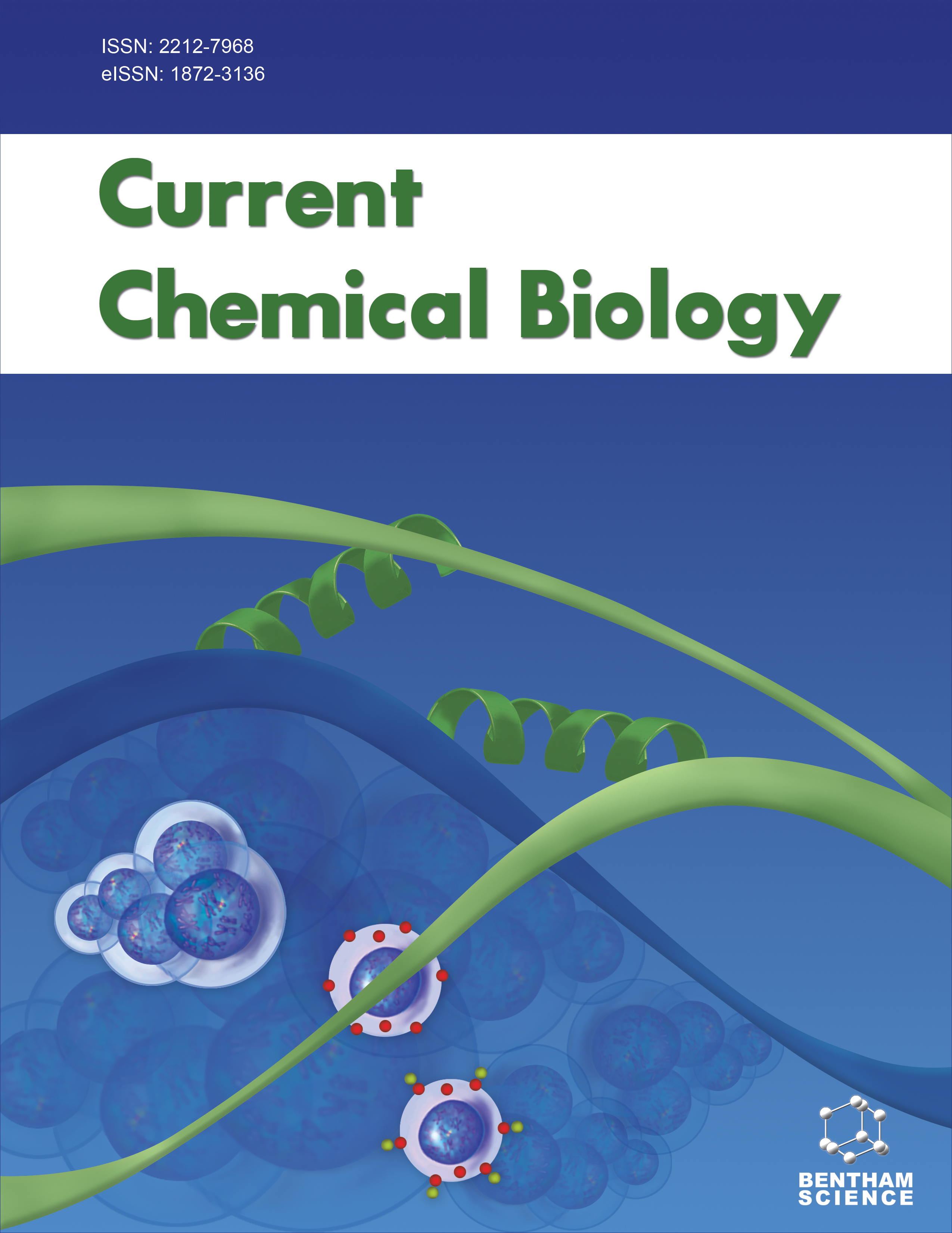- Home
- A-Z Publications
- Current Chemical Biology
- Previous Issues
- Volume 1, Issue 3, 2007
Current Chemical Biology - Volume 1, Issue 3, 2007
Volume 1, Issue 3, 2007
-
-
Non-Natural Nucleotide Analogs as Probes of DNA Polymerase Activity
More LessAuthors: Babho Devadoss and Anthony J. BerdisDNA polymerases catalyze the addition of mononucleotides into a growing polymer using a DNA template as a guide for directing each incorporation event. The efficiency and fidelity of this biological process have been historically attributed to the ability of the DNA polymerase to coordinate proper hydrogen-bonding interactions between the incoming nucleotide with the templating nucleobase. However, the stren Read More
-
-
-
Current Aspects of Carbohydrate Structural Bioinformatics
More LessAuthors: Taku Nakahara, Shin-Ichiro Nishimura and Tsuyoshi ShiraiCarbohydrates are often referred to as the third molecular chain of life, and they represent the most important post-genomics research targets. Recent reports of their biological functions in signal transduction and cellular recognition have made them promising pharmaceutical targets and disease markers. Like nucleic acids and proteins, the three-dimensional (3D) structures of carbohydrates are important for their molecul Read More
-
-
-
Binding-Site Chemical Probing in Homology Models Using Affinity Labeling of Cysteine-Substituted Receptors
More LessAuthors: Bernard Foucaud, Karine Alarcon, Elias Sakr and Maurice GoeldnerThe accuracy of the docking of a ligand in its modeled binding-site depends on the reliability of this model. To provide a model with experimental support, we have developed an engineered affinity labeling method combining cysteine-reactive probes with substitutions of putative site-lining residues into cysteines. This strategy amounts to building chemical sensors for the proximity of the substituted cysteines; it requires an Read More
-
-
-
Bioinorganic Chemistry: The Study of the Fate of Platinum-Based Antitumour Drugs
More LessAuthors: Elisabetta Gabano, Mauro Ravera, Donato Colangelo and Domenico OsellaThe history of inorganic pharmacology can be traced to antiquity with the medicinal use of inorganic salts, coordination and organometallic compounds. The clinical applications of metal-based drugs today are limited, but extremely significant. The most common metallo-therapeutic drugs are platinum, gold and bismuth compounds used in anticancer protocols and in the treatment of rheumatoid arthritis and gastric Read More
-
-
-
Recent Progress in Unique Solid Surfaces for Biological Applications
More LessAuthors: Hu Yan and Kaoru TsujiiThis review briefly describes three unique types of solid surfaces, i.e., honeycomb polymer films, thermo-responsive polymergrafted glass surfaces and super water-repellent surfaces with a fractal structure. Details of preparation and physical properties are presented first followed by highlights of recent progress in cell culture on the solid surfaces.
-
-
-
Recent Advances in Understanding Fundamental Mechanisms of Volatile General Anesthetic Action
More LessAuthors: Tao Zhang, Konda S. Reddy and Jonas S. JohanssonOver 20 million patients in the United States alone each year receive a general anesthetic for a surgical procedure. Nevertheless, molecular mechanisms of volatile general anesthetic action remain poorly understood. The favored sites of action in the central nervous system are currently a variety of plasma membrane proteins including the Cys-loop superfamily of ligand-gated ion channels and the N-methyl-D-aspartate r Read More
-
-
-
Jak2 and Reactive Oxygen Species: A Complex Relationship
More LessAuthors: Issam McDoom and Peter P. SayeskiReactive oxygen species (ROS) are oxygen-containing molecules that possess unpaired electrons. ROS are a normal component of cellular life, and accumulating evidence suggests that these molecules play critical roles in many important signal transduction pathways. However, maintaining a balance between ROS production and elimination is a crucial component of cellular homeostasis. Unregulated increases in cellular ROS Read More
-
-
-
Chemistory of Fibrates
More LessAuthors: Ganesaratnam K. Balendiran, Malkhey Verma and Elise PerrySince the description of the synthetic chemical clofibrate in 1962, various derivatives of fibrates with a diversity of chemical structures have been developed. Several of these are used clinically to treat dyslipidemia because they are generally effective in lowering elevated plasma triglycerides and cholesterol. Studies suggest that several biochemical mechanisms underlie fibrate-mediated modulation of lipoprotein and related Read More
-
-
-
1,5-Dioxaspiro[2.4]heptanes
More LessAuthors: Francisco Alonso, Francisco Foubelo and Miguel YusThis review article deals with different aspects of the dioxaspiro[2.4]heptanes, such as their presence in Nature, biogenetic origin, biological activity, as well as the different strategies for their synthesis and their chemical reactivity. In addition, selected total syntheses of natural products containing this moiety is presented, paying especial attention to the steps involving the generation of the dioxaspiro[ 2.4]heptane unit.
-
Volumes & issues
Most Read This Month
Article
content/journals/ccb
Journal
10
5
false
en


